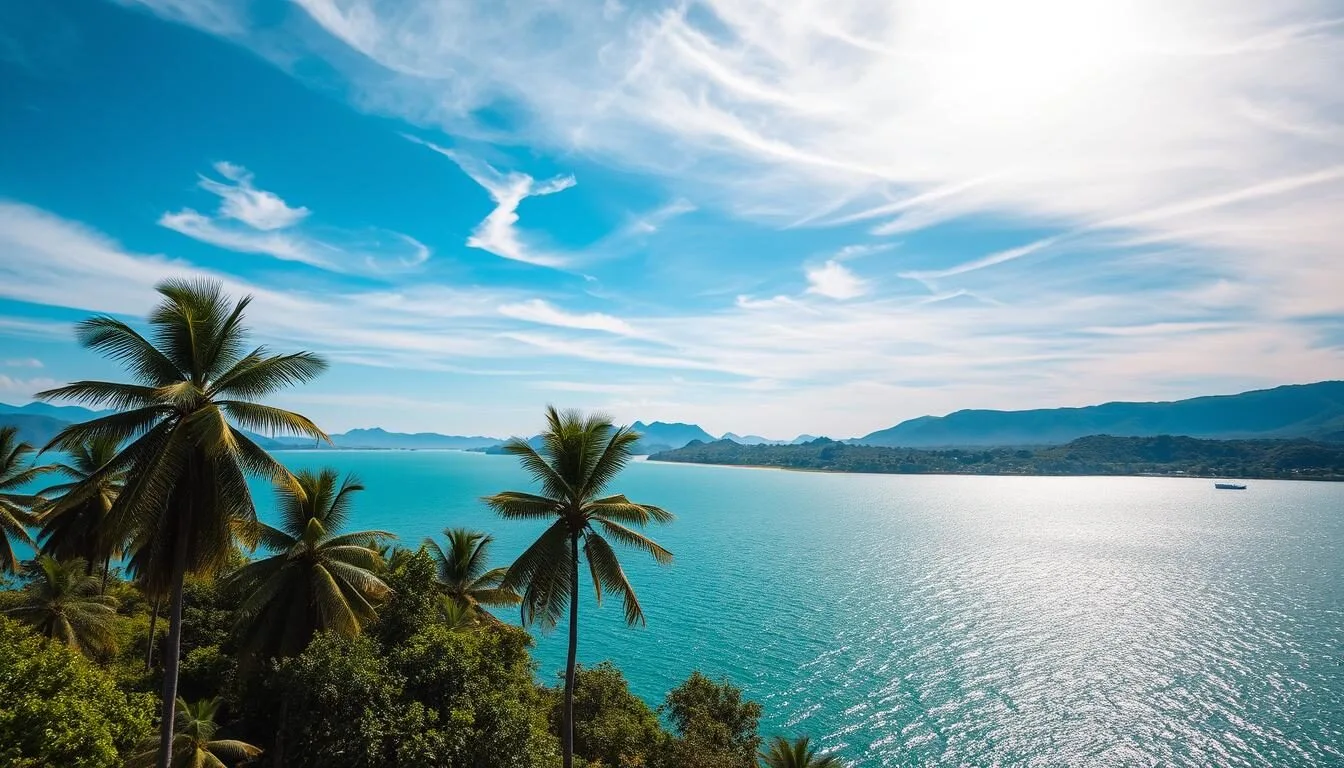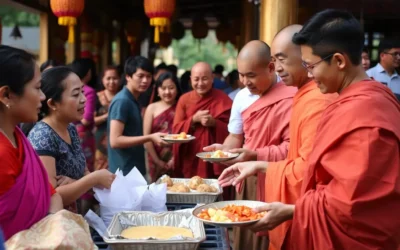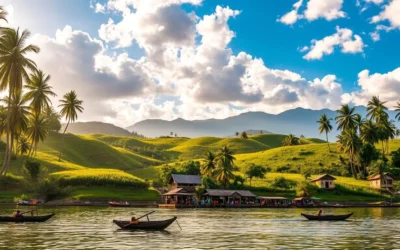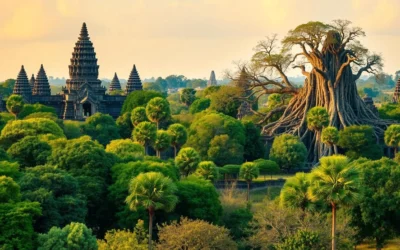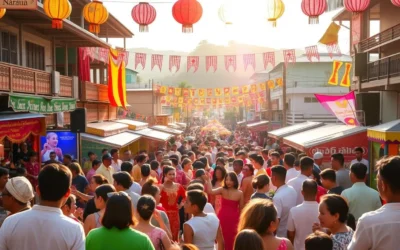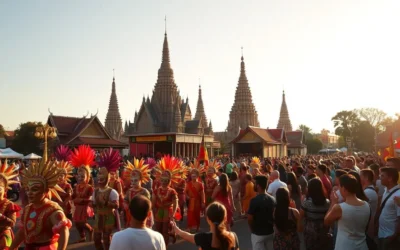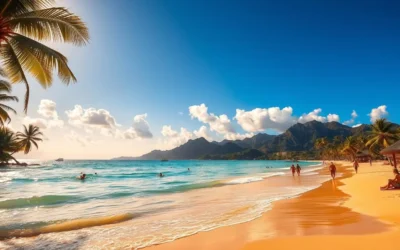✓ Accommodations✓ Flights✓ Rental Cars✓ Tours & Activities
Imagine a place where the rhythm of life is dictated by the waters, and the landscape transforms dramatically with the seasons. Welcome to Tonle Sap Lake, Southeast Asia’s largest freshwater lake, where the experience is as unique as the destination itself.
You are about to embark on a journey through a remarkable ecosystem that is home to floating villages and a diverse array of wildlife. As you explore this incredible destination, you’ll discover the rich cultural heritage and natural wonders that make Tonle Sap Lake an unforgettable experience.
From kayaking adventures to cultural immersion, this guide will walk you through the top activities and experiences that await you at this ecological marvel, making it easy to plan your trip and complement your visit to the nearby Angkor temples.
Discovering Southeast Asia’s Largest Freshwater Lake
As you explore the wonders of Cambodia, you’ll discover the magnificent Tonle Sap Lake, a true marvel of nature.
Tonle Sap Lake is not just any ordinary lake; it’s a dynamic body of water that changes dramatically with the seasons. During the dry season, the lake shrinks to a fraction of its size, but with the onset of the monsoon rains, it undergoes a remarkable transformation.
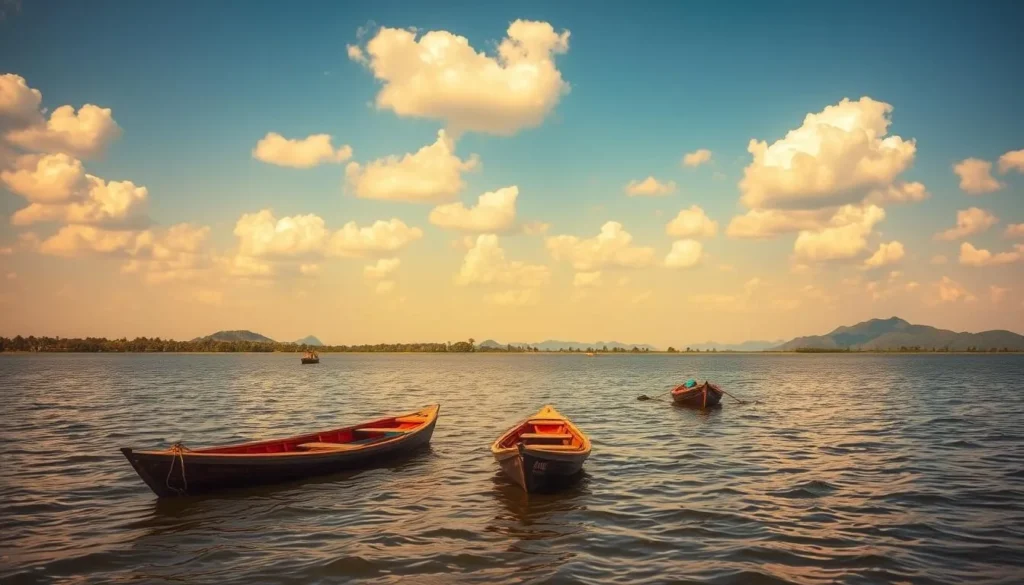
What Makes Tonle Sap Lake Unique
The uniqueness of Tonle Sap lies in its seasonal flow reversal. The mighty Mekong River reverses its flow, infusing the lake with water and transforming it into a vast, shimmering expanse.
- The lake expands tenfold, creating a spectacular natural phenomenon.
- This seasonal waltz nourishes a rich tapestry of life, making Tonle Sap one of the world’s most productive freshwater ecosystems.
- The annual flooding cycle supports unique adaptations in both plant and animal life.
The Ecological Wonder of the Reverse Flow
The reverse flow of the Tonle Sap River is a fascinating phenomenon that brings nutrient-rich sediments into Sap Lake, supporting an incredibly productive ecosystem.
This natural wonder has earned Tonle Sap recognition as a UNESCO Biosphere Reserve, highlighting its importance to the global nature and ecological balance.
Best Time to Visit Tonle Sap Lake
Tonle Sap Lake’s unique ecosystem means that the time of your visit can greatly impact your experience. Understanding the seasonal changes is key to planning your trip.
Wet Season Experience
During the wet season, from June to October, Tonle Sap Lake is at its most expansive, offering breathtaking views. The lake’s waters rise, flooding the surrounding forests and creating a vast aquatic landscape. This season is ideal for those who want to see the lake in its most dramatic state. You can enjoy a boat ride through the flooded forests, witnessing the lake’s incredible biodiversity.
Dry Season Experience
In contrast, the dry season, from November to May, offers a different yet equally captivating experience. As the waters recede, the lake reveals fertile floodplains where local communities plant crops, giving you insight into the agricultural cycle. This period is perfect for day trips from Siem Reap, with clearer skies and more predictable weather. It’s also an excellent time for birdwatching, particularly from December to April, as migratory birds flock to the remaining wetlands around Tonle Sap Lake or Sap Lake as some refer to it.
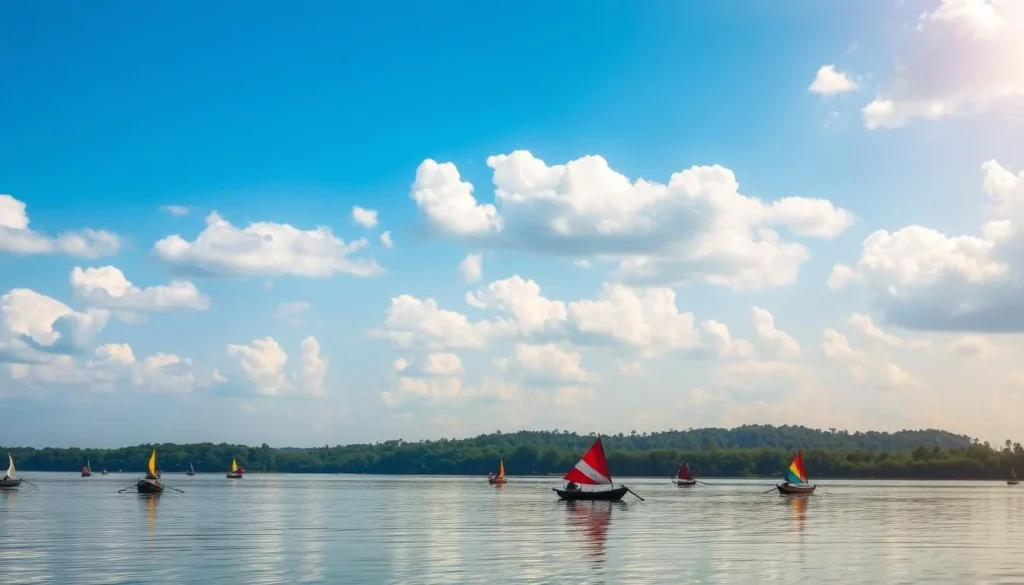
Boat Trips on Tonle Sap Lake
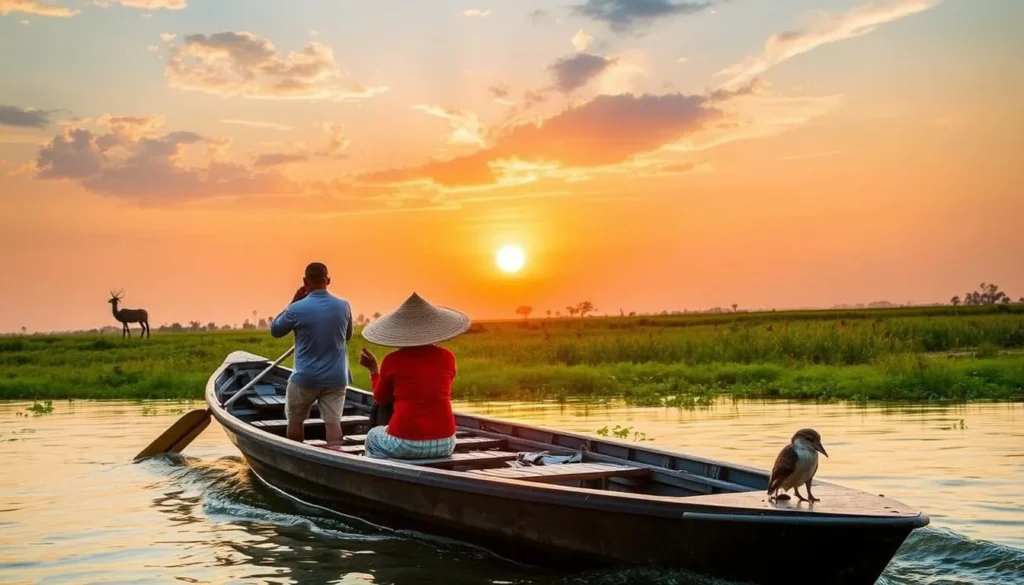
A boat trip on Tonle Sap Lake is an experience unlike any other, offering a glimpse into the daily lives of the people living on Cambodia’s largest freshwater lake. As you cruise through the calm waters, you’ll witness the vibrant life on the lake, from fishermen casting their nets to children paddling to floating schools.
Guided Tour Options and Prices
Various boat tour options are available, catering to different interests and budgets. You can choose from guided tours that range from a few hours to a full-day journey across Tonle Sap Lake. Prices vary depending on the tour operator and the services included, so it’s advisable to compare options before booking.
What to Expect During Your Boat Journey
During your journey on Tonle Sap Lake, you’ll traverse through a diverse landscape of open waters, flooded forests, and floating or stilted villages. The tour will give you a chance to observe local people going about their daily activities, such as fishing and selling goods from boat to boat. You might even encounter some of the lake’s unique wildlife, including water birds and fish.
Many boat tours include stops at floating markets or restaurants where you can sample local delicacies and purchase fresh fruits directly from vendors on the water. Your guide will provide insights into the ecological significance of Tonle Sap Lake and how the local communities have adapted to the seasonal changes in water levels.
Exploring the Floating Villages of Tonle Sap
One of the most fascinating experiences on Tonle Sap Lake is visiting its floating villages, where life adapts to the changing water levels. As you explore these unique communities, you’ll gain insight into the traditional way of life of the people living on the lake.

Chong Kneas: The Most Accessible Floating Village
Chong Kneas is one of the most visited floating villages due to its proximity to Siem Reap. While it may be more touristy than other villages, it still offers a glimpse into life on the lake. You can explore the village’s floating school, clinic, and even pagoda. However, be prepared for a more commercialized experience.
Kampong Khleang: The Authentic Stilt House Experience
For a more authentic experience, head to Kampong Khleang, a stilted village that’s less touristy than Chong Kneas. Here, you can see how locals live in harmony with the changing water levels. During the dry season, the village is accessible by road, while in the wet season, it’s a floating community. You’ll see traditional stilt houses and experience the local culture firsthand.
Prek Toal: A Lesser-Known Gem
Prek Toal is a lesser-known floating village located in the northwestern part of Tonle Sap Lake. It’s a dual experience, offering both a glimpse into traditional fishing communities and an important bird sanctuary. The village is home to various waterbirds, and you can take a guided boat tour to explore the surrounding wetlands. Your visit contributes to community-based tourism initiatives that support conservation efforts.
Visiting these floating villages is an adventure like no other, offering a unique perspective on life in Cambodia. As you explore Tonle Sap Lake, you’ll discover the resilience and adaptability of its inhabitants, making for a truly memorable experience in this incredible place.
- Experience the daily life of Tonle Sap’s inhabitants
- Visit floating schools, clinics, and pagodas
- Explore the unique ecosystems of the lake
- Support community-based tourism initiatives
By exploring the floating villages of Tonle Sap Lake, you’re not only having an adventure but also contributing to the local communities and conservation efforts. This experience will leave you with a deeper appreciation for the people and the environment of this remarkable sap lake.
Kayaking Adventures on Tonle Sap Lake
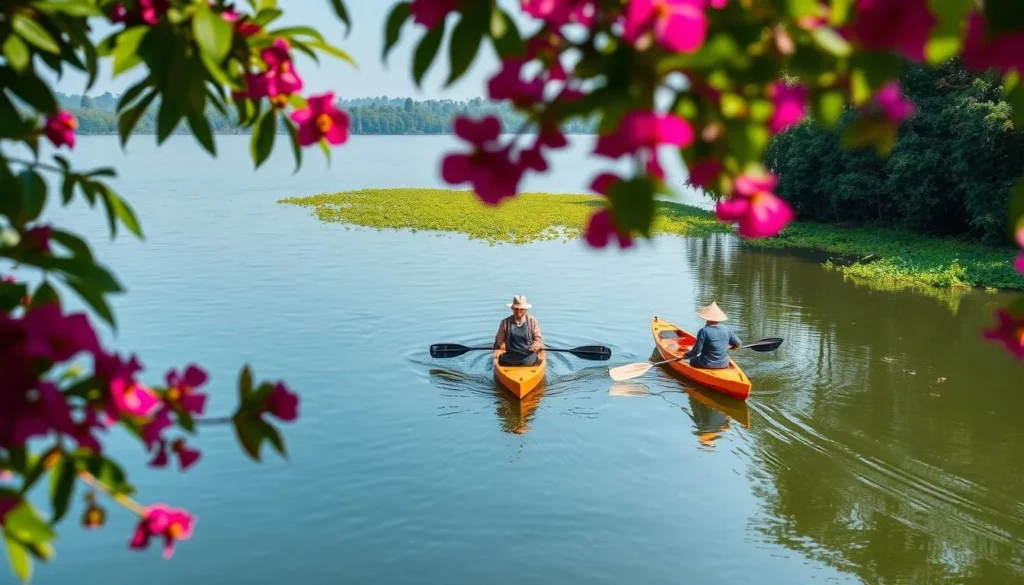
Kayaking on Tonle Sap Lake is a unique way to explore the rich biodiversity of Cambodia’s largest freshwater lake. As you paddle through the serene waters, you’ll be surrounded by the sights and sounds of nature in its purest form.
Guided Kayaking Tours
Guided kayaking tours on Tonle Sap Lake offer a chance to explore the lake’s vast ecosystem with expert guides. These tours cater to different skill levels and provide insights into the lake’s unique ecological features. You’ll have the opportunity to paddle through flooded forests during the wet season, spotting a variety of wildlife, including tree snakes and monitor lizards.
Wildlife Spotting While Kayaking
The quiet approach of a kayak allows for excellent wildlife spotting opportunities, as it disturbs animals less than motorized boats. Tonle Sap Lake is home to over 300 species of freshwater fish, 100+ varieties of birds, and numerous reptiles and amphibians. During the early morning hours, you’ll have the best chance to spot species like the spot-billed pelican and various kingfishers that make the lake their home.
With binoculars and a waterproof camera, you can capture the beauty of nature on Tonle Sap Lake. As you kayak across the lake, you’ll experience the tranquility of Tonle Sap and Sap Lake, making for an unforgettable adventure.
Tonle Sap Lake, Cambodia: Best Things to Do for Wildlife Enthusiasts
As a wildlife enthusiast, you’re likely drawn to Tonle Sap Lake for its incredible biodiversity. The lake’s unique ecosystem supports a wide range of species, making it an ideal destination for nature lovers.
Prek Toal Bird Sanctuary

Prek Toal Bird Sanctuary is a must-visit for birdwatchers. It’s a vital sanctuary that protects hundreds of species, including some that are rare and precious. You’ll have the opportunity to spot globally threatened bird species, such as the spot-billed pelican, greater adjutant stork, and milky stork.
Rare Species to Look For
Tonle Sap Lake is home to a variety of rare and visually striking species. The painted stork, with its pink-tinged white plumage, black and white wings, and distinctive yellow-tipped pink bill, is a sight to behold. You might also spot the Oriental darter, recognizable by its snake-like neck and habit of swimming with only its neck above water.
Beyond birds, the lake ecosystem supports rare fish species like the giant Mekong catfish and the endangered Irrawaddy dolphin. Your guide will help you identify various species and explain their ecological roles and conservation status, enhancing your appreciation for the biodiversity of this unique ecosystem.
Exploring the Mangrove Forests
One of the most captivating aspects of Tonle Sap Lake is its mangrove forests, which are a marvel of nature. These unique ecosystems are not only breathtaking but also play a crucial role in the lake’s ecological balance.
Unique Freshwater Mangrove Ecosystem
The mangrove forests of Tonle Sap Lake create a unique freshwater mangrove ecosystem. Unlike typical saltwater mangroves, these forests thrive in freshwater conditions, supporting a diverse range of flora and fauna. The forest is home to numerous species of trees, some of which have adapted to the changing water levels by developing specialized root systems.
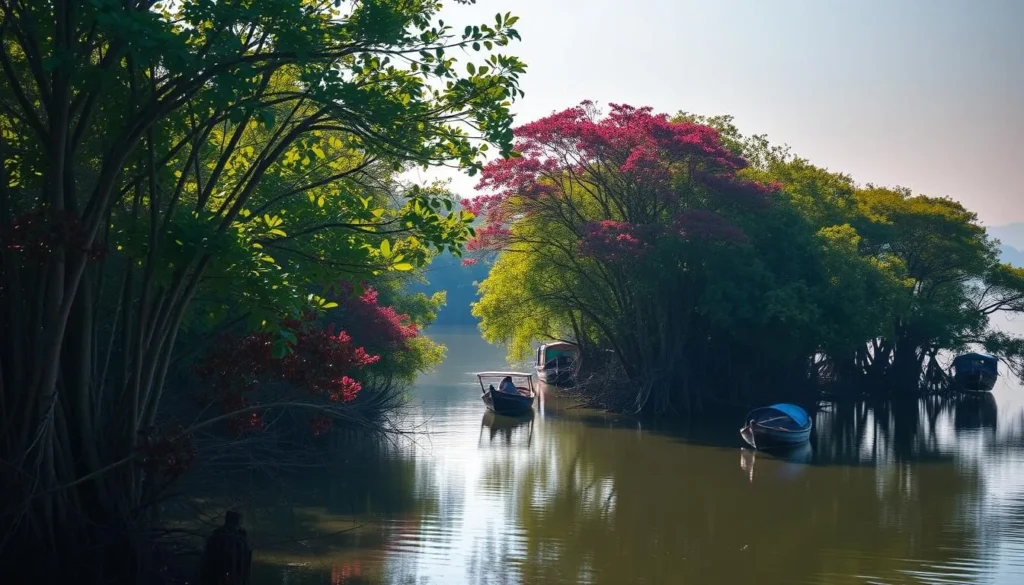
Seasonal Transformations of the Forest
The mangrove forests undergo dramatic transformations with the changing season. During the wet season (June-October), the forests become submerged, creating a flooded ecosystem. As the water recedes in the dry season, the forest floor emerges, revealing nutrient-rich mud that teems with life. This seasonal pulse supports a rich biodiversity and is crucial for the local fisheries, providing up to 75% of Cambodia’s protein intake.
You’ll witness the incredible adaptability of the mangrove forests and their inhabitants, a true testament to the resilience of nature.
Cultural Immersion: Meeting the Lake People
By engaging with the people of Tonle Sap Lake, you can gain a deeper understanding of their daily lives and traditions. The unique cultural practices of the communities surrounding the lake are shaped by their dependence on the lake’s resources.
Daily Life in Floating Communities
Life in the floating communities of Tonle Sap Lake is centered around the water. Villagers live in stilt houses or floating homes, adapting their lifestyle to the changing water levels. They fish for food and collect bird eggs and reeds to make a living. You can observe how they use boats to navigate the lake and its channels.
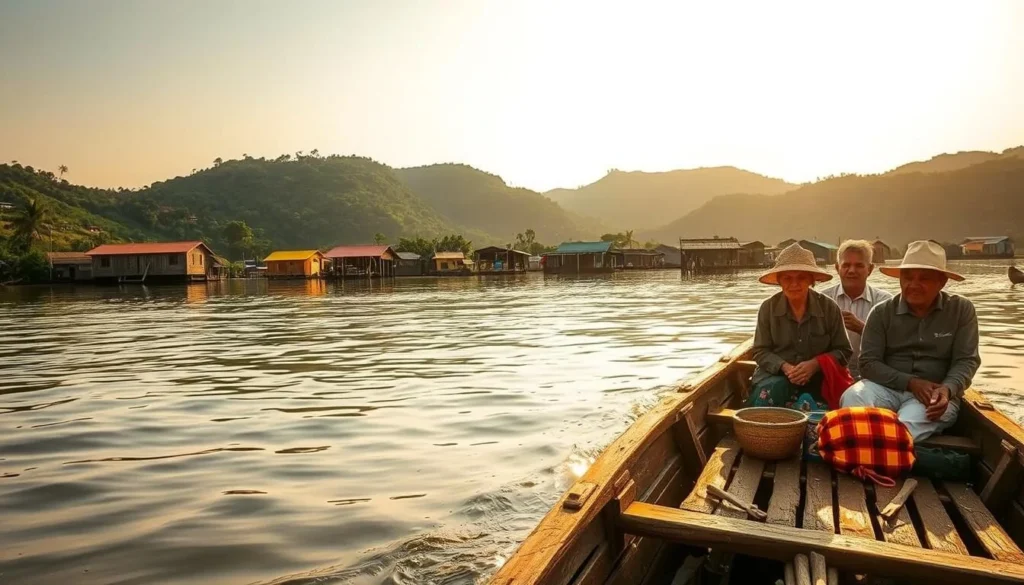
Traditional Fishing Techniques
The fishing communities of Tonle Sap Lake employ various techniques that have been passed down through generations. Some of the methods include:
- Using cylindrical bamboo traps called “lop” submerged in strategic locations to catch fish.
- The iconic dai trawling method, which involves large bag-like nets suspended from wooden structures.
- Cast nets thrown by hand in a circular pattern during the dry season.
- Preserving fish through smoking, drying, and fermenting to create prahok, a staple in Cambodian cuisine.
These techniques are adapted to the seasonal changes of the Tonle Sap Lake, showcasing the resourcefulness of the people living there.
Culinary Experiences Around Tonle Sap
Tonle Sap Lake offers more than just breathtaking views; it also presents a culinary adventure waiting to be savored. As you explore the lake, you’ll have the opportunity to indulge in local delicacies and experience the rich culinary culture of Cambodia.
Fresh Seafood Delicacies
The lake is renowned for its fresh seafood, with dishes that showcase the rich flavors of Cambodian cuisine. You can enjoy a variety of fish and other seafood, often served with traditional recipes that have been passed down through generations. Many floating restaurants specialize in freshly caught fish, prepared in traditional Cambodian styles, allowing you to select your meal from the day’s catch.
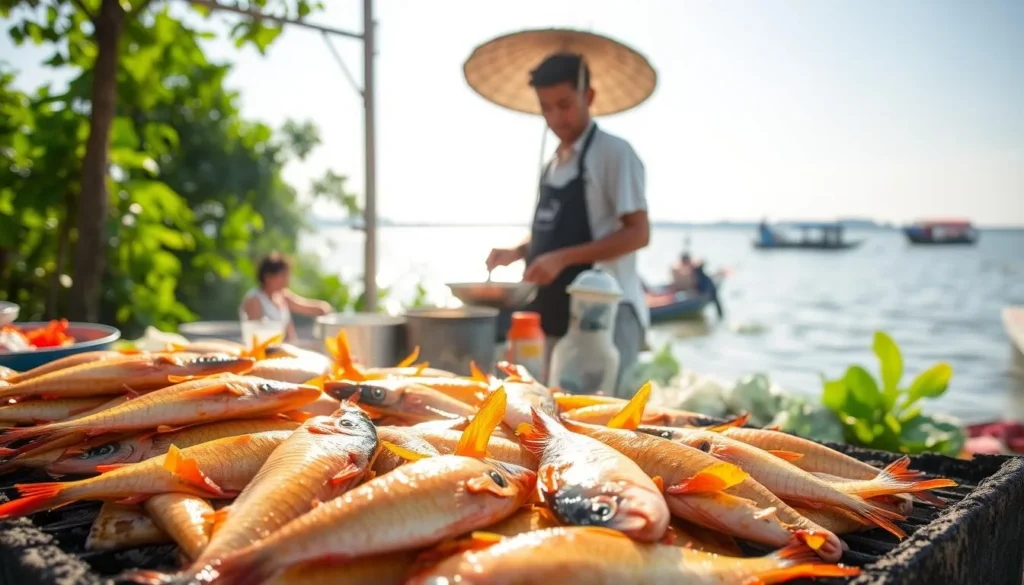
Floating Restaurants Worth Visiting
Several floating restaurants on Tonle Sap Lake offer an authentic dining experience with stunning views of the surrounding waters. The Floating Village Restaurant near Chong Kneas is a popular choice, offering panoramic views and specializing in amok trey and other Cambodian classics. At Kampong Phluk, you can enjoy home-cooked meals at family-run eateries, supporting local families directly while savoring the local cuisine.
Photography Opportunities at Tonle Sap Lake
With its unique landscapes and rich cultural heritage, Tonle Sap Lake is a photographer’s paradise. The lake offers a diverse range of photography opportunities, from capturing the serene beauty of the lake’s landscapes to documenting the vibrant daily life of its inhabitants.
Sunrise and Sunset Shots
The early morning and late afternoon are ideal times for capturing stunning photographs at Tonle Sap Lake. During these periods, the soft, golden light enhances the beauty of the lake and its surroundings, making it perfect for sunrise and sunset shots. You’ll be able to capture breathtaking views of the lake, with the changing colors of the sky reflected on the water’s surface.

Capturing Daily Life on the Water
Tonle Sap Lake is home to numerous floating villages, where people live and work on the water. Photographers can capture the essence of life on the lake by documenting the daily activities of the local communities. From fishermen casting their nets at dawn to children playing on the rickety boardwalks, there’s no shortage of fascinating moments to capture. The floating markets, with their vibrant scenes of commerce and social interaction, are also worth photographing.
| Photography Tips | Best Practices |
|---|---|
| Use a telephoto lens for respectful distance | Always ask permission before taking close-up portraits |
| Look for telling details that illustrate adaptation to lake life | Capture the changing water levels throughout the seasons |
Conclusion: Making the Most of Your Tonle Sap Lake Adventure
As you conclude your planning for a visit to Tonle Sap Lake, remember that this Cambodian gem offers a multifaceted experience tailored to various interests. Whether you’re passionate about wildlife, photography, cultural immersion, or culinary adventures, Tonle Sap Lake has something for you.
To make the most of your trip, plan at least a full day to explore the lake. Consider combining activities like morning bird watching, exploring floating villages, and sunset photography. Supporting responsible tourism initiatives ensures the lake’s ecosystem and communities thrive.
Your journey to Tonle Sap Lake will be memorable, offering new perspectives on adaptation and living in harmony with nature. Whether you visit during the wet or dry season, Tonle Sap Lake remains one of Cambodia’s most extraordinary destinations. It’s a perfect complement to your temple explorations in nearby Siem Reap, making your trip to Cambodia truly unforgettable.
The above is subject to change.
Check back often to TRAVEL.COM for the latest travel tips and deals.
